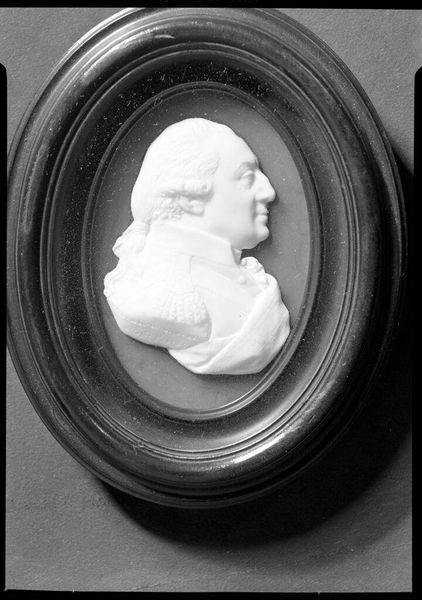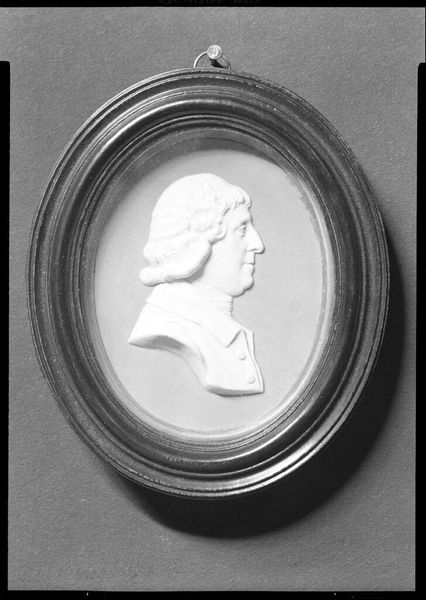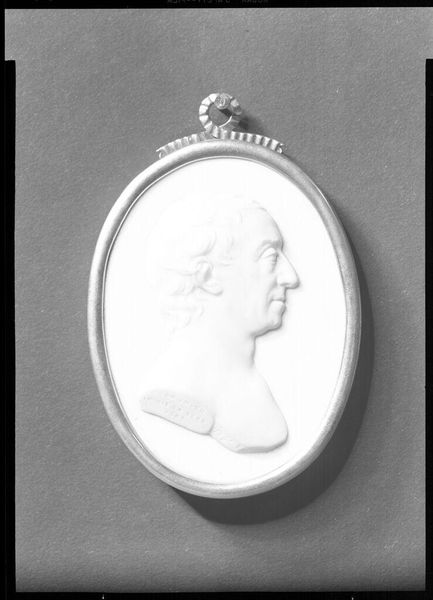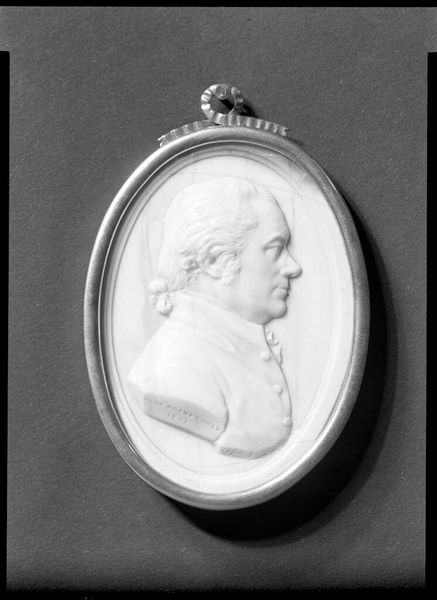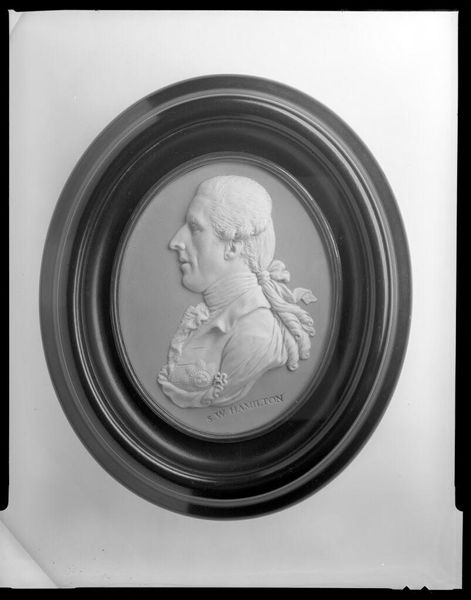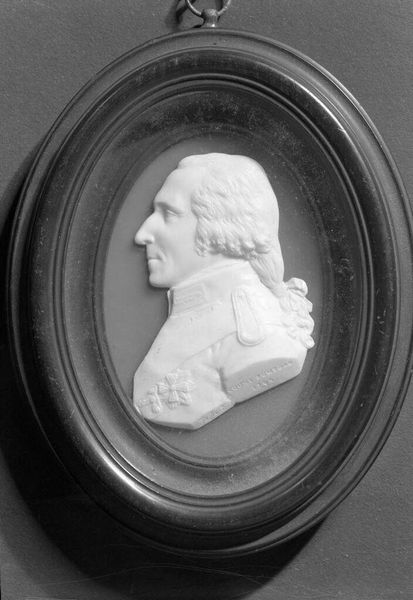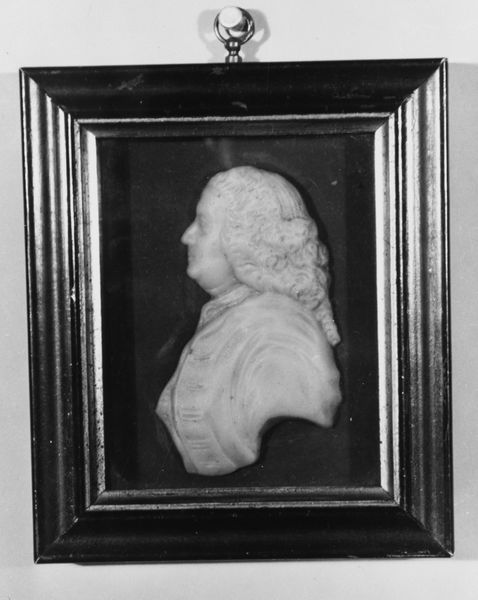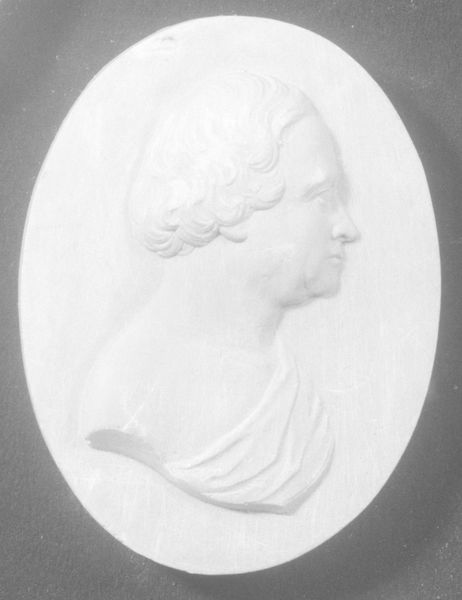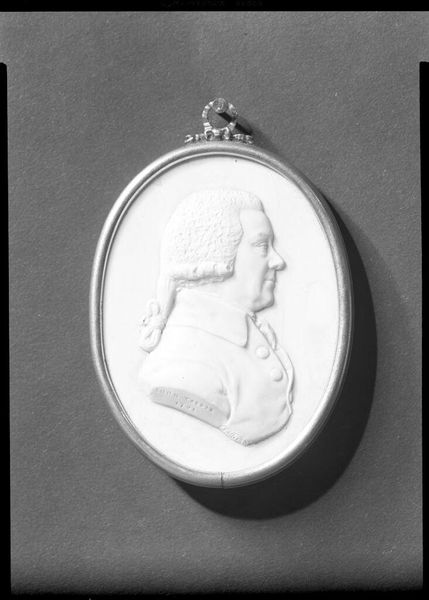
Dimensions: sight: 11.3 x 7.7 x 2.5 cm (4 7/16 x 3 1/16 x 1 in.)
Copyright: CC0 1.0
Curator: The stark profile immediately evokes a sense of 18th-century formality and power. The monochrome palette adds to its severity. Editor: We're looking at "Colonel Henry Hamilton (1734-1796)" by James Tassie, a sculpted glass paste cameo piece currently housed at the Harvard Art Museums. It's a compelling example of portraiture from this period. Curator: Hamilton's role as Lieutenant Governor of Quebec during the American Revolution is central to understanding this. The image presents a powerful British figure, complicit in imperial violence, yet rendered in a style suggesting classical virtue. Editor: Exactly. The choice of a cameo, a format often associated with classical antiquity, lends him an air of timeless authority. This was a conscious effort to legitimize British rule, even in a time of conflict. Curator: And that contrast, between the brutality of his actions and the refinement of the portrait, reveals a fascinating tension, doesn't it? I wonder how audiences today interpret it, considering our evolved understanding of colonial history. Editor: Indeed. Considering Tassie's work through that lens adds complexity. It reminds us how art can reflect and reinforce power structures, even subtly. Curator: A potent reminder of the complexities inherent in representing historical figures. Editor: Absolutely, it's a potent reminder of the power of art to shape, and challenge, historical narratives.
Comments
No comments
Be the first to comment and join the conversation on the ultimate creative platform.


